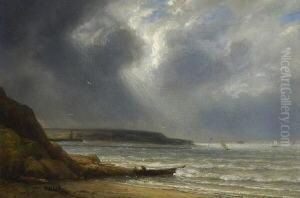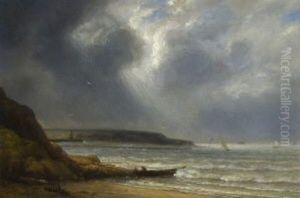Adolphe Couvelet Paintings
Adolphe Couvelet was a French painter known for his portraits and historical scenes. Born in 1795 in the wake of the French Revolution, Couvelet's life and career were situated within a period of significant social and political transformation in France. His work reflects the artistic styles and subjects that were prevalent in the early 19th century, particularly those associated with the Neoclassical movement, which emphasized clarity, order, and the ideals of ancient Greek and Roman art.
Couvelet received his artistic training at the École des Beaux-Arts in Paris, where he studied under influential figures such as Jacques-Louis David, the leading Neoclassical painter of the era. David's influence is evident in Couvelet's precise drawing, attention to detail, and the restrained emotion of his portraits. Despite living in a time overshadowed by the towering figure of David and his school, Couvelet managed to carve out a niche for himself, particularly in the genre of portraiture.
Although not as widely known as some of his contemporaries, Couvelet's work was respected in his time. He exhibited at the Paris Salon, the official art exhibition of the Académie des Beaux-Arts in Paris, which was a prestigious venue for artists to display their work. His portraits often portrayed members of the middle class, a reflection of the changing social landscape in post-revolutionary France. This middle class was gaining prominence as the traditional aristocracy's influence waned, and their patronage was important for artists like Couvelet.
Tragically, Adolphe Couvelet's life was cut short when he died in 1829 at the age of 34. Consequently, his oeuvre is not as extensive as that of artists who lived longer. Nevertheless, his work provides us with a window into the aesthetic preferences and social dynamics of early 19th century France. Today, his paintings can be found in various museums and collections, where they continue to be appreciated for their craftsmanship and historical value.

